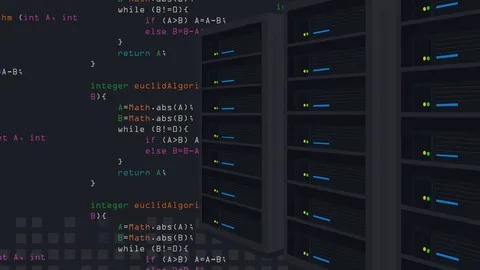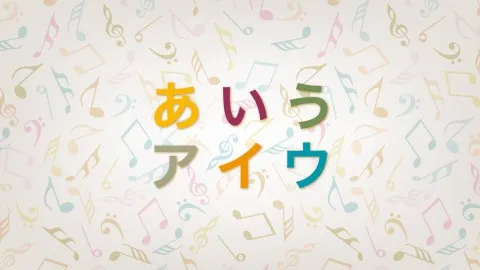
Introduction to Japanese Kanji 
This course introduces students to the basics of Japanese Kanji. Learn the best methods for learning Kanji, as well as the most useful characters. Understand the structure of each Kanji character and how to use them in Japanese writing. Gain the skills to read and write Kanji with confidence. ▼
ADVERTISEMENT
Course Feature
![]() Cost:
Cost:
Free
![]() Provider:
Provider:
Youtube
![]() Certificate:
Certificate:
Paid Certification
![]() Language:
Language:
English
![]() Start Date:
Start Date:
On-Demand
Course Overview
❗The content presented here is sourced directly from Youtube platform. For comprehensive course details, including enrollment information, simply click on the 'Go to class' link on our website.
Updated in [May 25th, 2023]
This course will provide learners with an introduction to Japanese
Kanji
and its use in the Japanese language. Learners will gain an understanding of the structure of
Kanji
characters, the different radicals used in
Kanji
writing, and the various methods of learning
Kanji
. The course will also cover the history of
Kanji
and its use in Japanese culture. Learners will be able to practice writing
Kanji
characters and learn how to read and understand them. Finally, learners will be able to apply their knowledge of
Kanji
to everyday life in Japan.
Learners can learn a variety of topics from this course, including:
1. The structure and components of Kanji characters, including radicals and stroke order.
2. The history and cultural significance of Kanji in Japan.
3. Different methods of learning Kanji, such as mnemonics and memorization techniques.
4. How to read and understand Kanji characters.
5. How to apply Kanji to everyday life in Japan.
[Applications]
After completing this course, students should be able to apply their knowledge of Japanese Kanji by reading and writing Japanese texts, as well as recognizing and understanding the meaning of Kanji characters. Additionally, students should be able to use the best methods for learning Kanji, such as memorizing radicals and practicing writing Kanji characters.
[Career Paths]
1. Japanese Translator: Japanese translators are responsible for translating written and spoken Japanese into another language. They must have a strong understanding of both languages and cultures, as well as an understanding of the nuances of the language. As the demand for Japanese translation services continues to grow, so does the need for qualified translators.
2. Japanese Language Teacher: Japanese language teachers are responsible for teaching students the basics of the language, as well as more advanced concepts. They must be able to explain the language in a way that is easy to understand and be able to provide feedback to students on their progress. With the increasing popularity of Japanese culture, the demand for Japanese language teachers is expected to continue to grow.
3. Japanese Interpreter: Japanese interpreters are responsible for interpreting spoken Japanese into another language. They must have a strong understanding of both languages and cultures, as well as an understanding of the nuances of the language. As the demand for Japanese interpretation services continues to grow, so does the need for qualified interpreters.
4. Japanese Content Creator: Japanese content creators are responsible for creating content in Japanese for various media outlets. They must have a strong understanding of the language and culture, as well as an understanding of the nuances of the language. With the increasing popularity of Japanese culture, the demand for Japanese content creators is expected to continue to grow.
[Education Paths]
1. Bachelor of Arts in Japanese Language and Culture: This degree program provides students with a comprehensive understanding of the Japanese language, culture, and history. Students will learn about the various writing systems, including Kanji, as well as the grammar and pronunciation of the language. Additionally, students will gain an understanding of the culture and history of Japan, and how it has shaped the language. This degree is ideal for those looking to pursue a career in teaching, translation, or international business.
2. Master of Arts in Japanese Language and Literature: This degree program focuses on the study of Japanese literature, including the use of Kanji. Students will learn about the various writing styles, including classical and modern, and how they are used in literature. Additionally, students will gain an understanding of the history and culture of Japan, and how it has shaped the literature. This degree is ideal for those looking to pursue a career in teaching, translation, or research.
3. Doctor of Philosophy in Japanese Language and Culture: This degree program provides students with an in-depth understanding of the Japanese language, culture, and history. Students will learn about the various writing systems, including Kanji, as well as the grammar and pronunciation of the language. Additionally, students will gain an understanding of the culture and history of Japan, and how it has shaped the language. This degree is ideal for those looking to pursue a career in teaching, translation, or research.
4. Master of Science in Japanese Language and Technology: This degree program focuses on the use of technology in the study of Japanese language and culture. Students will learn about the various writing systems, including Kanji, as well as the grammar and pronunciation of the language. Additionally, students will gain an understanding of the culture and history of Japan, and how technology has been used to enhance the study of the language. This degree is ideal for those looking to pursue a career in teaching, translation, or technology-related fields.
Course Provider

Provider Youtube's Stats at AZClass
Discussion and Reviews
0.0 (Based on 0 reviews)
Explore Similar Online Courses

Free Linux Tutorial - Linux Tutorials and Projects (Free)

UI & UX Design Tutorial : Wireframe Mockup & Design in Figma

Python for Informatics: Exploring Information

Social Network Analysis

Introduction to Systematic Review and Meta-Analysis

The Analytics Edge

DCO042 - Python For Informatics

Causal Diagrams: Draw Your Assumptions Before Your Conclusions

Whole genome sequencing of bacterial genomes - tools and applications

Japanese for Beginners: Quick and Easy to Understand Lessons

Online Japanese N2 Course(All 10 lessons)

Japanese - KanaBeats - Hiragana and Katakana
 Related Categories
Related Categories
Quiz
 Submitted Sucessfully
Submitted Sucessfully
1. What is Kanji?
2. What is the minimum number of radicals in a Kanji character?
3. What is the main focus of this course?


Start your review of Introduction to Japanese Kanji